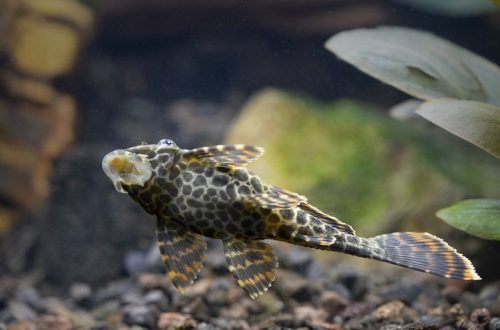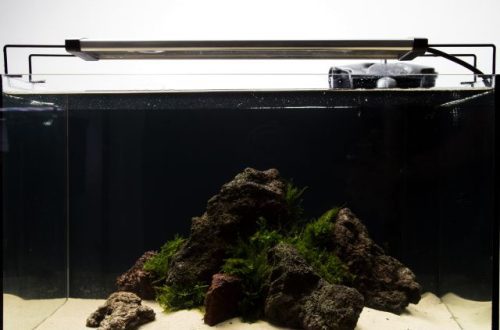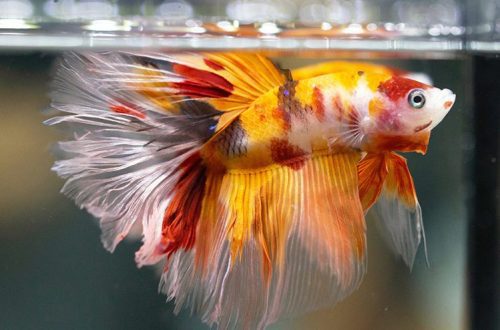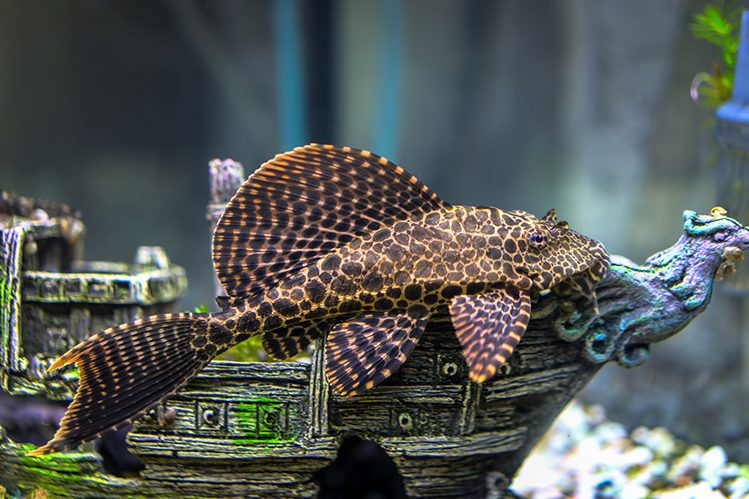
How to care for catfish in an aquarium?
If at least one sucker catfish lives in an aquarium, then this makes the whole aquadome more impressive and exotic. Small catfish for the aquarium diversify the picture of the underwater world, help keep the aquarium clean, and delight you with their curious habits. Do not think that your catfish will necessarily be a medium-sized bizarre fish stuck to the glass. To date, more than 500 species of catfish are known. What do you need to know about their content?
The order of catfish includes 34 families of catfish. A distinctive feature of catfish of any size is the absence of scales. Their body is covered with either bare skin or bony plates. Plates are usually found in small catfish – this is their protection from larger and more aggressive neighbors in the aquaworld. Mustaches, sensory organs, help them find food. In some species of catfish, the whiskers are almost invisible. But the platypus catfish has three pairs of whiskers.
Do not rush to buy the catfish you like. First, find information about the conditions of detention and life expectancy of these underwater inhabitants. Some species need to be looked after for 10-15 years. Some species of catfish grow from small glorious fish into real aquarium giants that are able to eat smaller neighbors.
You should buy small catfish for an aquarium in the company of an experienced expert, or from trusted breeders and sellers. Often, by mistake, beginners acquire instead of ancistrus their “big brothers” – brocade pterygoplichts. While they are very small, it can be difficult to distinguish between them. They have a similar coloration in brown tones. But an adult pterygoplicht is three times larger than ancistrus, it can grow up to 40 or even 50 centimeters in length.
Even the easiest to care for and popular with aquarists, the common ancistrus catfish is jealous of its territory. These dark brown with light mottled creatures are quite peaceful. But experienced aquarists note that among several ancistrus in the aquarium there is always one who considers himself the main one and drives the rest. Such problems can be solved by purchasing a more spacious aqua-house. For two ancistrus, an aquarium with a volume of at least 80 liters is required.
If you have already begun to study materials about catfish, you probably came across references to licensed catfish. L-numbering is used for discovered, but not yet sufficiently studied, new species of chain or loricari catfish, hence the letter L. Loricari catfish include ancistrus, pterygoplichts, otocincluses, loricaria, sturisomes, farlovells, hypoptomes and others. 500 new species are known, which are so far designated by a letter with a number.

Experienced aquarists advise you to first get an ancistrus vulgaris. So you will get used to the unusual behavior of the catfish in the aquarium, you will be able to observe its reaction to different types of food. Caring for a catfish will become a habit for you.
- Ancistrus live for more than seven years. An adult individual reaches a length of 10-12, and even 15 centimeters. It is easy to distinguish a male from a female. The representatives of the stronger sex have noticeable antennae-growths. Compliance with the necessary water parameters will ensure the health of your spotted wards. In their natural habitat, they prefer fast flowing rivers. The temperature for catfish in the aquarium should remain between 20 and 28 degrees. The acidity of the water (pH) is from 6 to 7,5. Hardness – up to 20.
Ancistrus are not aggressive, but their sucker mouth can damage the flanks of clumsy, slow-moving fish. For this reason, the neighborhood of ancistrus with goldfish is highly undesirable. Curious ancistrus can inflict similar injuries on scaleless fish. These catfish are incompatible with large, aggressive fish, territorial cichlids.
Sucker catfish do not like bright light, in the daytime they prefer to freeze motionless on a snag or stump. At dusk they become more active. It is best to feed them at this time.
Ancistrus content requires good filtration, it is better to choose an external filter with a sponge. Aeration and regular replacement of about a third of the water in the aquarium is necessary. Although these catfish are called cleaners, do not expect miracles from one or two ancistrus. At a young age, the catfish cleans the aquarium very diligently, but over the years it begins to be lazy and lie at the bottom thinking about the eternal.
There are several varieties of ancistrus, you can choose a pet with a more bizarre color. There are albinos, star ancistrus, red and others. They are in no way inferior to them in the bizarre color and popularity of the variety of armored catfish of the corridors.
- Corridors live in flocks. Get five or six fish at once. For such a company, a capacity of 40 liters is suitable. These nimble catfish reach a length of seven centimeters. They live for eight to ten years. The optimum temperature for catfish in an aquarium is 20-25 degrees. Corridors are suitable for water acidity of 6-7,4. Water hardness – 1-17. Corridors require aeration, filtration, partial replacement of water with fresh water once a week.
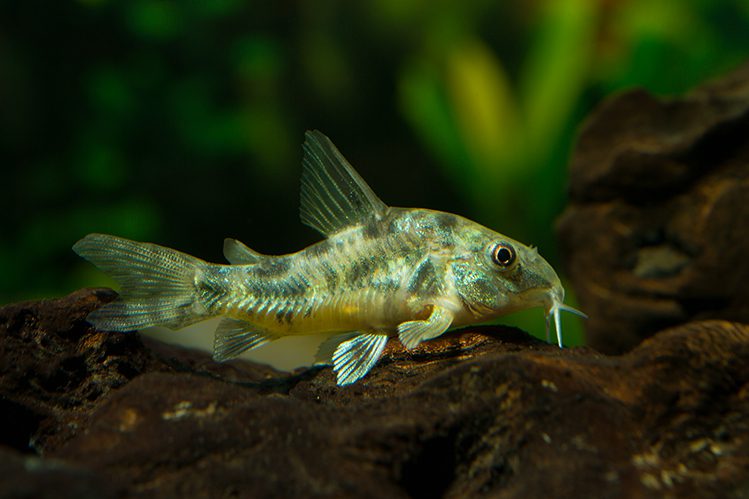
The speckled catfish is the most popular. The golden corridors are very beautiful, the brightest of them are of a golden-bronze hue. Corydoras are known for their iron health and resistance to environmental factors. Therefore, they are advised to be the first to be launched into a new aquarium. With the exception of albinos – this variety was bred by breeders, they are weaker and almost devoid of vision.
Ancistrus and Corydoras get along well in the same aquarium. How many catfish you would like to place in the aquarium, do not overpopulate. Corridors are not suitable as neighbors for territorial cichlids, goldfish. Add peace-loving calm fish to them. Suitable angelfish, barbs, zebrafish, guppies, mollies, parsing, cockerel, gourami, discus.
Even the most unpretentious catfish have their little weaknesses. The aquarium should have enough plants, shelters. Hollow coconut shells, clay shards, grottoes, caves, driftwood and stumps will do. The snag will serve as a source of food for catfish. They need cellulose, so they will enthusiastically gnaw at driftwood.
Catfish love to dig in the ground in search of food. And snag catfish (aka bicolor bunocephalus) completely burrows into the sand in just a second. For catfish, sand or fine rounded soil is preferable. Catfish are bottom dwellers, the soil should not damage their skin. You should not overdo it with underwater flora, there should be enough space on the ground so that all the catfish of the aquarium have the opportunity to lie down on the bottom.
The choice of food for catfish is not difficult. Now there are many specialized feeds for each type of fish. Catfish need both plant and protein foods.
Choose sinking food that sinks to the bottom, closer to your pets. This is especially important for ancistrus. They don’t have a swim bladder. They are only able to push off the snags and the bottom and gradually move around the aquarium. Specialized food for chain catfish is not suitable for armored catfish. You will not be able to provide proper nutrition to corridors if you offer them food for ancistrus.
Make sure that the diet of catfish is varied. Feed them once a week with cucumbers or zucchini scalded with boiling water. Remove large scraps from the bottom in time and do not forget about regular cleaning in the aquarium.
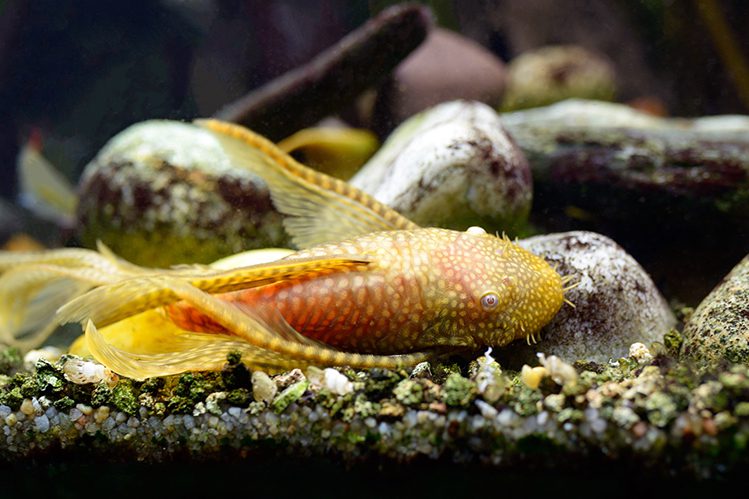
Under favorable conditions, the same ancistrus can give offspring. The female lays her eggs in a long stump, in a long plastic tube or other similar object of aquarium decor. The male protects the eggs and at first looks after the fry.
Corridors behave a little differently. The female collects fertilized eggs in a pocket from her ventral fins, and then attaches the eggs to a flat surface. It can be plants or aquarium glass. If you want to encourage catfish to spawn, do water changes more often, give your pets more protein foods, increase the temperature in the aquarium by one to two degrees.
Catfish are called unpretentious. But in no case should you check their health for strength. Take care of your catfish. They will definitely repay you with cleanliness in the aquarium, excellent health and longevity.



